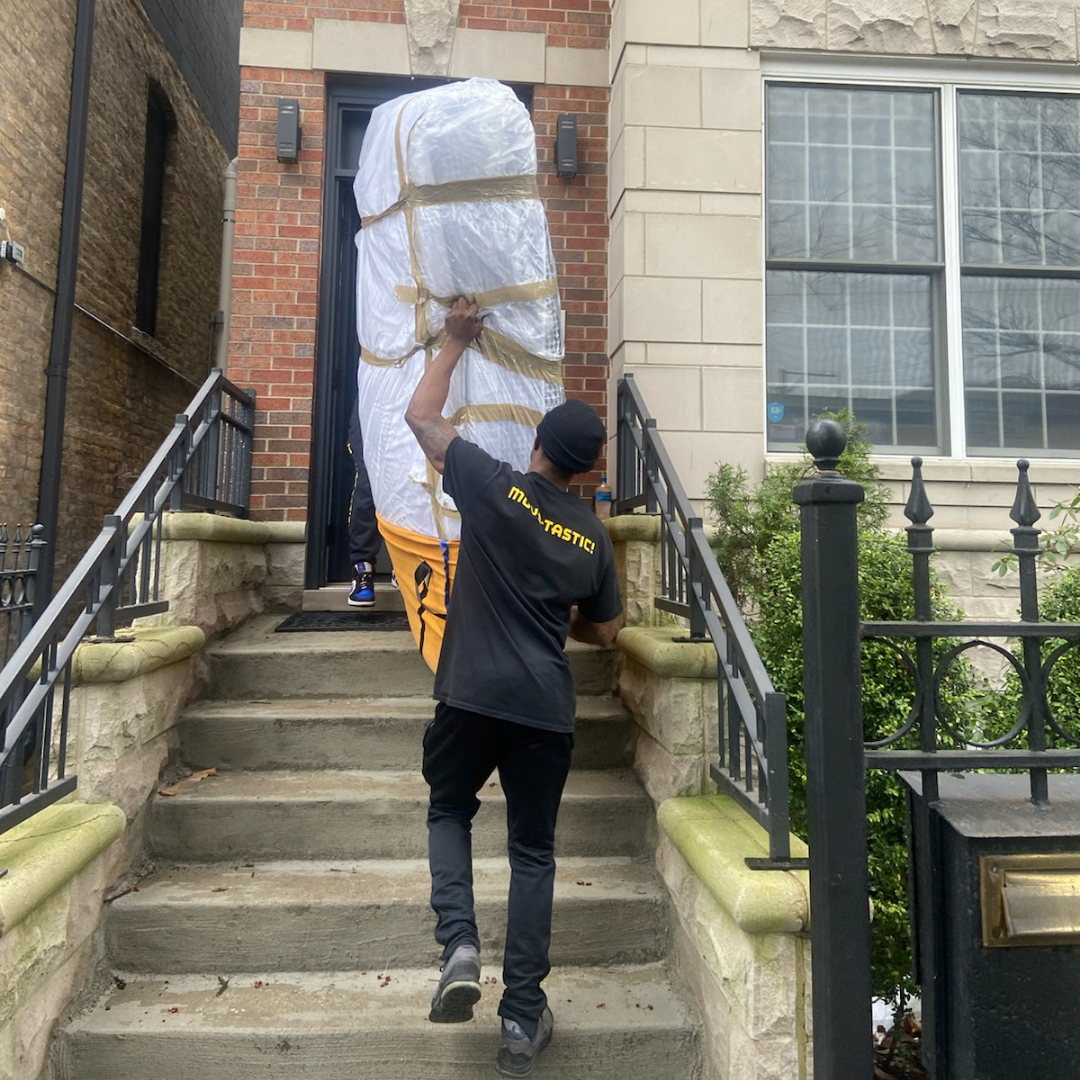
by Rose Morrison
Rose is the managing editor of Renovated, a home living site where she strives to help people live their best DIY lives.
Although moving is an opportunity to go through possessions that no longer serve you or fit your style, you might be more eager to unpack everything and organize your new life as soon as possible. However, tackling unpacking with a plan is a much better way to ward off stress and exhaustion. A slow and steady pace may also save you some time. Here are six helpful tips to unpack and make your home your own.
1. Develop an Unpacking System
Depending on the size of your old place to your new home, you could have quite a few boxes to unload. A one-bedroom apartment could require 20–40 boxes, while a three-bedroom house could comprise 80–100 boxes. Of course, some people own more than others, meaning their piles will be much bigger.
Before jumping into the first few boxes, developing a plan is essential. Keep an inventory list from the moving company — or create one yourself — and store unopened boxes in their designated rooms.
2. Create a Holding Area
Any boxes that don’t fit in the appropriate rooms or are in the way should be stored in a safe area until you’re ready for them — ideally, where they’re less susceptible to pests, water and mold.
Pests can eat through cardboard and wood containers stored in the garage, so avoid keeping precious family heirlooms where they could incur damage. Additionally, you’ll want to store items on a raised platform to protect them from ground moisture. Doing so will prevent mold or mildew from developing.
3. Begin With the Essentials
Always start unpacking the “essentials” box — of course, you may have more than one. Typically, these boxes are the first off the truck or go with you in your car.
Essentials will allow you to get by for a few nights until you make headway unpacking. They might include medications, toiletries, essential documents, devices, chargers and some basic cookware. If you didn’t pack a box of the essentials, look through other boxes and pull out what you need.
4. Unpack Room By Room
Organization is vital when unpacking your belongings. Therefore, try to unpack one room at a time — the kitchen is often an excellent starting point. Once your kitchen goods are unloaded and stored, you can cook meals in your new home and eat out less.
Tackle the bedrooms, bathrooms or living room next. Setting up your study or home office is also crucial if you work from home. Other spaces like the formal dining room or utility and storage area could be last.
Moving is highly physical and sometimes dangerous — you’ll have to cut boxes open and break them down with a sharp knife or scissors. Be sure to wear comfortable clothes for the occasion. Long hours and heavy lifting will cause you to sweat.
Also, you never know if ceramic pieces broke in a box or if items became dislodged during transportation. While protective goggles and gloves may seem ridiculous, they can prevent cuts, scratches or bruises.
5. Declutter As You Go
You most likely got rid of a lot of stuff as you packed up your old house. However, you may feel ready to shed more belongings as you unpack. Moving into a new place is a great way to do a second round of decluttering.
Make a pile of items you want to throw out or donate — of course, put any broken things you can’t fix in the trash. You might even see something you thought you needed but realized you rarely use. Decluttering frees up space for new things and is a great way to choose a more minimal lifestyle.
Donating your possessions also has social and environmental benefits. For example, the Salvation Army uses the revenue from reselling used goods to deliver food, shelter, medical services, rehabilitation and special activity programs to underserved community members. Additionally, Goodwill diverted three billion pounds of landfilled usable goods in 2021, making donating an eco-friendly habit to adopt.
6. Assemble and Arrange Furniture
Arranging your furniture to your liking should be reasonably straightforward, especially since you likely know how to situate each piece. A new house or apartment floorplan should allow you to sketch your desired layout ahead of time so you only have to arrange the furniture once.
Assembling bulky, heavy pieces may require more time, though. It’s best to take a similar approach to how you unpacked room by room. Focus on assembling the furniture in your living room first — including the sofa, entertainment center and bookshelves. Your dining room table, chairs and hutch may be next on the list. After everything is in place, you can finish organizing decorative items around your room.
Hire Experts to Keep You Organized
Unpacking boxes and making your home your own requires organization before and after the move. To ensure you can settle into your new home quickly and efficiently, you should contact Move-tastic’s expert team of movers to care for all your packing needs.